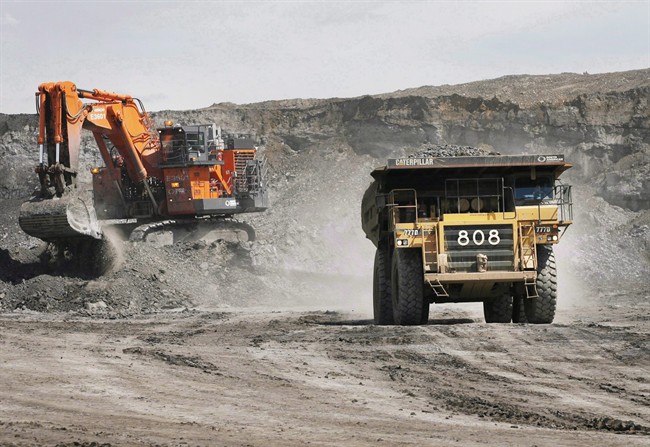Alberta has promised to increase environmental monitoring of the in-situ oilsands industry following research that shows such plants can release contaminants into the land and water.

“It’s a clear red flag that something’s going on and we need to look into it,” said Bill Donahue of Alberta Environment’s monitoring and science division.
On Monday, the University of Ottawa released a study on a small lake near Cold Lake, Alta., where there has been extensive in-situ development.
Such mining involves injecting high-pressure, high-temperature steam underground to soften bitumen enough so that it can be pumped to the surface. Most of Alberta’s production is now driven by steam, not giant trucks and shovels, and most of the industry’s future expansion is expected to involve in-situ techniques.
In-situ extraction doesn’t leave behind large tailings ponds or vast landscape disturbances as do open-pit mines, so it’s often described as more environmentally friendly.
READ MORE: New rules state Alberta tailings ponds must be reclaimed after 10 years
But when scientists took core samples of sediment in the lake, they found potentially toxic chemicals associated with petrochemicals had grown steadily in concentration as development increased. Those levels are now 137 per cent higher than in 1985.
The levels are still too low to have environmental impacts. But they are real, growing and raising questions about whether they’re coming from pipeline leaks, leaky well bores, process water, groundwater or underground fault lines.
“It behooves us to look into the problem,” Donahue said.
When Alberta set up its new oilsands monitoring program in 2012, it was mostly focused on the giant open-pit mines most often associated with the industry, he said. But in-situ facilities were “a big elephant in the room.”
“One of the issues that was looming was looking into the in-situ industry and looking into what its environmental impacts are — and beyond just contaminant dynamics,” Donohue said. “That was the obvious next step and we’re starting to do that.”
READ MORE: Alberta oilsands monitoring needs to be clearer: review
The two priorities are to figure out where such contamination might be a problem and how contaminants end up in the environment.
“The next step is to figure out a plan,” Donohue said.
The Alberta government has already begun monitoring some air impacts in the Peace River area.
The in-situ industry has already been criticized for its high carbon footprint — greenhouse gases are created as fossil fuels are burned to heat up the bitumen — and for its fragmentation of wildlife habitat.
“It would be wrong to consider in-situ some form of lower impact oilsands development that deserves less scrutiny,” said Simon Dyer of the clean energy think-tank Pembina Institute.
Dyer welcomed the province’s intention to look more closely at in-situ impacts. He pointed out that such projects often receive a lower level of assessment during regulatory hearings: open-pit mines get federal-provincial panels and in-situ projects are only scrutinized provincially.
“Given the scope and scale of some of these projects and the potential for impacts, we think there’s a role for federal oversight in review of in-situ projects,” Dyer said.

Comments